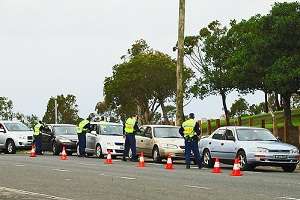Random Breath Test tactics fail to deter drunk drivers

Western Australia's random breath testing strategy may be capturing more drink-drivers but not deterring drink-driving behaviour for the community.
That's the finding of research using random breath test (RBT) data from WA Police Services Traffic Policy Unit and Queensland Police Service's Traffic Analysis Unit to explore the relationship between breath testing and alcohol related traffic crashes (ARTC).
The two states deploy RBTs differently; Queensland uses a saturation approach where drivers are pulled over indiscriminately and the sites and times of the operations vary.
WA's is more targeted with specific times and locations for RBT actions like 'booze buses'.
The report says both saturation and target testing should deter people from drinking and driving but because drivers think there is less chance of them being caught in a targeted operation, it is not as effective a deterrent.
University of Queensland's Institute for Social Research senior research fellow Jason Ferris says the findings are significant.
"Starting in July 2004, the monthly number of alcohol related traffic crashes in WA was slightly higher than that of Queensland relative to the population of licenced drivers," he says.
"Over the following five years, Queensland's rate has remained stable whereas the rate in WA has been increasing significantly.
"While there may be other explanations – we believe that the stable rates in Queensland are a function of the high volume non-targeted RBTs.
"While in WA the reduced volume of RBTs and the targeting of those RBTs done, may be resulting in the increasing number of alcohol related traffic crashes observed."
The research further found that the number of alcohol related traffic crashes in WA would be cut by 15 per month if the number of random breath tests conducted by police was doubled.
This would mean an additional 50,000 RBTs per month.
The findings, titled "Random breath testing in Queensland and Western Australia: Examination of how the random breath testing rate influences alcohol related traffic crash rates" have been reported in Elsevier and researchers say they provide valuable evidence on the effectiveness of RBT in deterring drink drivers.
Mr Ferris says future research will include determining the optimum level of RBT enforcement and if a national RBT policy is needed.
"A national RBT policy is something that we believe in – and are currently extending our research to examine other states and jurisdiction data looking at the association between RBTs and alcohol-related traffic crashes," Mr Ferris says.
More information: "Random breath testing in Queensland and Western Australia: examination of how the random breath testing rate influences alcohol related traffic crash rates." Ferris J, Mazerolle L, King M, Bates L, Bennett S, Devaney M. Accid Anal Prev. 2013 Nov;60:181-8. DOI: 10.1016/j.aap.2013.08.018. Epub 2013 Aug 30.
Journal information: Pain Management Nursing
Provided by Science Network WA

















